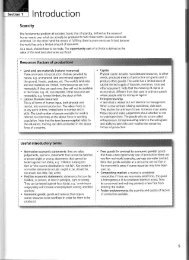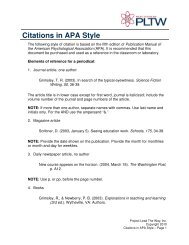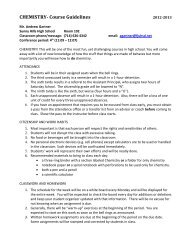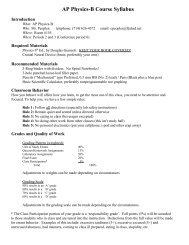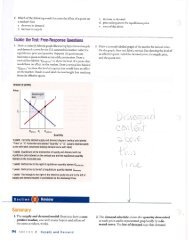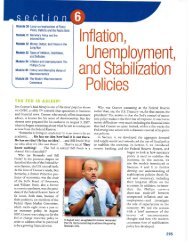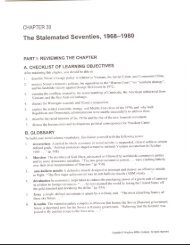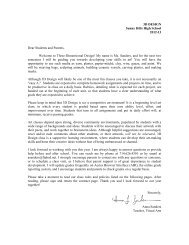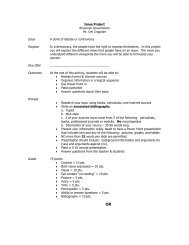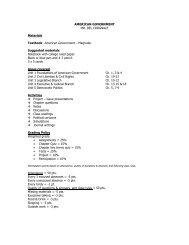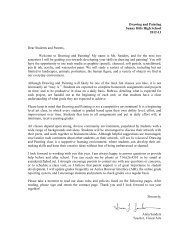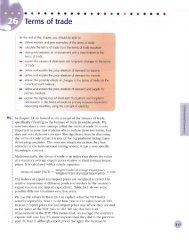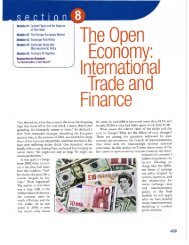IB Econ Study Guide Internationals - Sunny Hills High School
IB Econ Study Guide Internationals - Sunny Hills High School
IB Econ Study Guide Internationals - Sunny Hills High School
Create successful ePaper yourself
Turn your PDF publications into a flip-book with our unique Google optimized e-Paper software.
108<br />
Demand for foreign<br />
lmagine the world consisting of only two countries, Japan<br />
and Australia. The Japanese currency is the yen (JPY) and<br />
the Australian currency is the Australian dollar (AUD). In this<br />
simplified setup the question is: who demands Australian<br />
dollars in the foreign exchange market? The answer is a<br />
lapanese entity (household or firm) which does not have<br />
Australian dollars but needs them.<br />
Why would a Japanese entity need Australian dollars? Some<br />
basic reasons include:<br />
A Japanese company planning to purchase Australian<br />
wool or iron ore (export of a good).<br />
A Japanese couple planning to visit Uluru in central<br />
Australia where the second largest monolith in the world<br />
is located (export of a service - tourism).<br />
A resident of Japan wishing to make a savings deposit in<br />
Australian dollars or to buy Australian government bonds<br />
(an investment into Australia).<br />
A resident of Japan wishing to buy shares in an Australian<br />
mining company (an investment into Australia).<br />
. A Japanese company establishing a presence in Australia<br />
(an investment into Australia).<br />
More generally, any foreigner wishing to buy Australian<br />
goods and services or to make investments in Australia will<br />
need to buy Australian dollars. The first two reasons are<br />
related to international trade flows whereas the rest are<br />
related to international investment flows.<br />
In summary<br />
. The demand and supply of currencies in foreign exchange<br />
markets reflect internationaltrade flows and crossborder<br />
investment flows.<br />
. The demand for a country's currency reflects the value of<br />
its exports of goods and services as well as the inflow of<br />
investments into the country<br />
Exchange rate<br />
To simplify the analysis letl assume that there are no<br />
cross-border investments so that only exports and imports<br />
of goods and servrces (trade f,ows) create a reed to<br />
exchange currencies. We'll take the example of the Us<br />
and the EU15 (the 15 countries in the European Union<br />
before the expansion on 1 May 2004). Americans demand<br />
euros to buy EU15 goods and services and Europeans<br />
supply euros to buy (dollars and thus) American goods<br />
and services (Fig. 4.1 0).<br />
At the exchange raie e7 the supply of euros e/b reflects<br />
the value of imports into the FU15 while the demand for<br />
euros is e7a and reflects the value of EU15 exports to<br />
the US.<br />
The EU15 has a trade deficit as M > X and an excess<br />
supply of euros exists in the market equal to line segment<br />
ab. This excess supply of euros ln the foreign exchange<br />
market creates pressure for the price of the euro to<br />
.la.ra>



